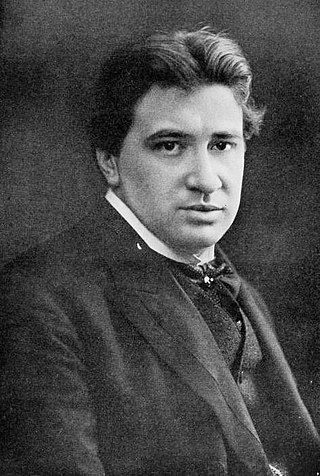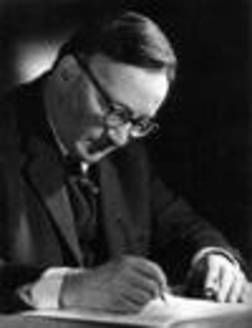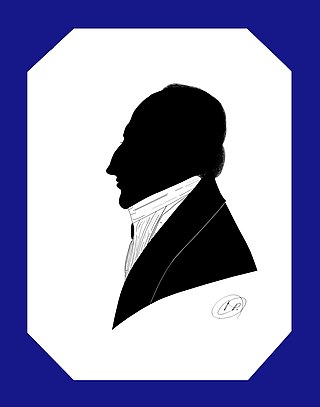List of string trios
This section needs additional citations for verification .(April 2014) |
Violin, viola, cello
| Composer | Composition |
|---|---|
| Johann Georg Albrechtsberger (1736–1809) |
|
| Georges Aperghis (born 1945) | Faux mouvement (1995) |
| J.S. Bach (1685–1750) | Goldberg Variations, BWV 988 (1741) (Arr. by Dmitry Sitkovetsky, in memoriam Glenn Gould ) |
| Ludwig van Beethoven (1770–1827) | |
| Wilhelm Berger (1861–1911) | String Trio in G minor, Op. 69 |
| Lennox Berkeley (1903–1989) | Trio for strings, Op. 19 (1944) |
| Howard Blake (born 1938) | String Trio, Op. 199 |
| Luigi Boccherini (1743–1805) | String Trios, G 95–100 and G 107–112 |
| Carlos Chávez (1899–1978) | Invención II (1965) |
| Friedrich Cerha (1926–2023) | 9 Bagatellen (2008) Zebra Trio (2010) |
| Justin Connolly (1933–2020) | String Trio, Op. 43 (2009–10) |
| Arnold Atkinson Cooke (1906–2005) | String Trio D51 (1950) |
| Jean Cras (1879–1932) | Trio pour violon, alto et violoncelle (1926) |
| Johann Nepomuk David (1895–1977) | Trio G-Dur (DK 267), Trio Werk 33/1, Nicoló Amati gewidmet, Trio Werk 33/2, Antonio Stradivari gewidmet, Trio Werk 33/3, Guarneri del Gesú gewidmet, Trio Werk 33/4, Jacobus Stainer gewidmet |
| Matthew Davidson (born 1964) | Music for String Trio (2006) ( Davidson n.d. ) |
| Carl Ditters von Dittersdorf (1739–1799) |
|
| Ernő Dohnányi (1877–1960) | Serenade in C major, Op. 10 |
| Gottfried von Einem (1918–1996) |
|
| Anders Eliasson (1947–2013) | Trio per archi "Ahnungen" (2013) |
| George Enescu (1881–1955) | Aubade, for violin, viola, and cello (Allegretto grazioso) |
| Karlheinz Essl (born 1960) | à trois/seul (1998) |
| Joseph Leopold Eybler (1765–1846) |
|
| Magdeleine Boucherit le Faure (1879–1960) | Impressions. Suite for Violin, Viola and Cello. Paris: Éditions Salabert, 1933. |
| Brian Ferneyhough (born 1943) | String Trio (1995) |
| Jean Françaix (1912–1997) | String Trio in C major, Op. 2 |
| Jürg Frey (1953-) |
|
| Robert Fuchs (1847–1927) | String Trio in A major, Op. 94 |
| Joseph Gehot (1756–1820) | String Trios, Op. 2, Nos. 1–6 |
| Yefim Golyshev (1897–1970) | String Trio, Zwölftondauer-Komplexe (twelve-tone-duration complex) (1925) |
| Jorge Grundman (born 1961) |
|
| Sofia Gubaidulina (born 1931) | String Trio |
| John Harbison (born 1938) | String Trio (2013) |
| Joseph Haydn (1732–1809) | String Trio in B major, Hob. V:8 (1765) |
| Swan Hennessy (1866–1929) | Petit trio celtique, Op. 52 (1921) |
| Heinrich von Herzogenberg (1843–1900) | String Trios, Op. 27, Nos. 1 & 2 |
| Paul Hindemith (1895–1963) |
|
| Gilad Hochman (born 1982) | Brief Memories for String Trio (2004) ( Hochman n.d. ). |
| Franz Anton Hoffmeister (1754–1812) | Terzetto Scholastico Streichtrio |
| Vagn Holmboe (1909–1996) | Gioco (Game) for string trio (1983) |
| Johann Nepomuk Hummel (1778–1837) |
|
| André Jolivet (1905–1974) | Suite for String trio |
| Gideon Klein (1919–1945) | String Trio (1944) |
| Zoltán Kodály (1882–1967) | Intermezzo-Allegretto |
| Hans Krása (1899–1944) |
|
| Ernst Krenek (1900–1991) |
|
| Carmelo Mantione (born 1980) | Trio d'archi (2021) |
| Frank Martin (1890–1974) | Trio (1936) |
| Donald Martino (1931–2005) | String Trio (1954) |
| Bohuslav Martinů (1890–1959) |
|
| Grace-Evangeline Mason (born 1994) | Into the Abyss, I Throw Roses (2018) |
| Siegfried Matthus (born 1934) | Windspiele, for string trio |
| Erkki Melartin (1875–1937) | String Trio Op.133 (1926?) |
| Darius Milhaud (1892–1974) |
|
| Wolfgang Amadeus Mozart (1756–1791) |
|
| Ernst Naumann (1832–1910) | Trio in D major, Op. 12 |
| Ștefan Niculescu (1927–2008) |
|
| Andrew Norman (born 1979) | The Companion Guide to Rome (2010) |
| Krzysztof Penderecki (born 1933) | String Trio (1990–91) |
| Václav Pichl (1741–1805) |
|
| Wayne Peterson (1927–2021) | String Trio (2007) |
| Ignaz Pleyel (1757–1831) | 3 String Trios, B 401–403 |
| Gerhard Präsent (born 1957) | Sounds Of Wood (1998) |
| Max Reger (1873–1916) |
|
| Carl Reinecke (1824–1910) | String Trio in C minor, Op. 249 |
| Wolfgang Rihm (born 1952) | Musik für drei Streicher (1977) |
| Sofie Rohnstock (1875-1964) | String Trio in G Major |
| Alessandro Rolla (1757–1841) |
|
| Julius Röntgen (1855–1932) [4] |
|
| Guy Ropartz (1864–1955) | Trio in A minor for Strings (1934–35) |
| Albert Roussel (1896–1937) | String Trio, Op. 58 |
| Kaija Saariaho (1952–2023) | Cloud Trio (2009) |
| Ernest Sauter (1928–2013) |
|
| Giacinto Scelsi (1905–1988) | Trio for strings (1958) |
| Alfred Schnittke (1934–1998) | String Trio (1985) |
| Arnold Schoenberg (1874–1951) | String Trio, Op. 45 (1946) |
| Franz Schubert (1797–1828) |
|
| Jean Sibelius (1865–1957) |
|
| Otto Siegl (1896–1978) |
|
| Robert Simpson (1921–1997) | String Trio (1987) |
| Nikos Skalkottas (1904–1949) | String Trio No. 2 (1935) |
| Karlheinz Stockhausen (1928–2007) | Hoffnung (2007) ( Günther 2008 ) |
| Richard Strauss (1864–1949) | Variations on "Das Dirndl is harb auf mi" TRV 109 (1882) |
| Sergei Taneyev (1856–1915) | String Trio in D major (1880) |
| Pyotr Ilyich Tchaikovsky (1840–1893) | Allegretto moderato (1863–64) |
| Jesús Torres (1965) | String Trio (2002) |
| Heitor Villa-Lobos (1887–1959) | String Trio (1945) |
| Graham Waterhouse (born 1962) |
|
| Julian Wagstaff (born 1970) | In Extremis (2011)() |
| Rolf Wallin (1957–) | Sway (2010) |
| Anton Webern (1883–1945) |
|
| Egon Wellesz (1885–1974) |
|
| John Woolrich (born 1954) | String Trio (1996) |
| Charles Wuorinen (1938–2020) | String Trio (1968) |
| Iannis Xenakis (1922–2001) | Ikhoor {Ιχώρ} (1978) |
| La Monte Young (born 1935) | Trio (1958) |
| Eugène Ysaÿe (1858–1931) | Trio "Le Chimay"(1915) |
| Bernd Alois Zimmermann (1918–1970) | Trio (1944) |
Two violins, cello
| Composer | Composition |
|---|---|
| Alexander Alyabyev (1787–1851) | Variations on a Russian folk song |
| Ludwig van Beethoven (1770–1827) | Prelude and Fugue for two violins and cello in E minor, Hess 29 (1795) |
| Luigi Boccherini (1743–1805) |
|
| Alexander Borodin (1833–1887) | String Trio in G minor on a Russian folk song |
| Siegfried Borris (1906–1987) | Terzettino |
| Werner Egk (1901–1983) | Trio in G minor |
| Joseph Gehot (1756–1820) | String Trios, Op. 5, Nos. 1–6 |
| Avgust Grigoryevich Gerke (1790–1847) | Trio pour deux violons et violoncelle op. 2 |
| Peter Hänsel (1770–1831) |
|
| Joseph Haydn (1732–1809) |
|
| Franz Anton Hoffmeister (1754–1812) |
|
| Feliks Janiewicz (1762–1848) | 6 String Trios |
| Joachim Kaczkowski (1789–1829) | Quatre variations op. 3 Six variations op. 4 |
| Wilhelm Killmayer (born 1927) | Trio for two violins and cello |
| Karol Lipiński (1790-1861) | String Trio in g minor Op. 8 String Trio in A-major Op. 12 |
| Wolfgang Amadeus Mozart (1756–1791) |
|
| Ignaz Pleyel (1757–1831) |
|
| Johann Mederitsch (1752–1835) | Fantasia Terza |
| Gerhard Präsent (born 1957) |
|
| Joseph Schuster (1748–1812) | String Trio in A minor |
| Johann Baptist Wanhal (1739–1813) |
|
Two violins, viola
| Composer | Composition |
|---|---|
| Frank Bridge (1879–1941) | Rhapsody Trio (1928) |
| Antonín Dvořák (1841–1904) |
|
| Robert Fuchs (1847–1927) |
|
| Zoltán Kodály (1882–1967) |
|
| David Ludwig (born 1974) | Rule of Three for two violins and viola (2016) |
| Sergei Taneyev (1856–1915) | String Trio in D major, Op. 21 (1907) |
Alternative scoring
| Composer | Composition |
|---|---|
| F.L. Gaßmann (1729–1774) |
|
| Sergei Taneyev (1856–1915) | String Trio in E♭ major, Op. 31, for violin, viola and violotta |
| John Zorn (born 1953) | Walpurgisnacht (2004) for violin, viola and double bass |









